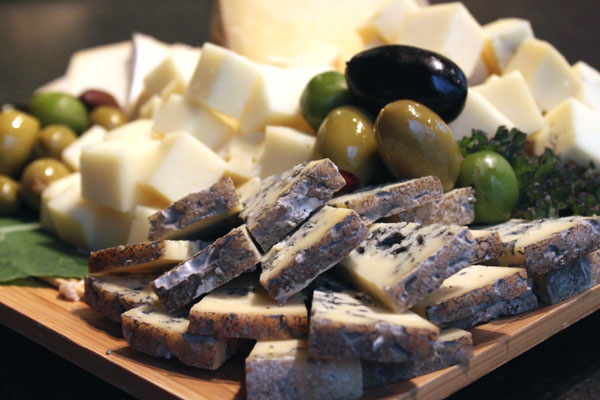Back to Basics: The Difference Between Blue Cheese & Stinky Cheese

Looking at the title of this post, you might already be thinking “What? There’s no difference; blue cheeses are stinky!” And in a way, you’re right: blue cheeses have their own, to put it gently, peculiar aromas which are often described as smelly, pungent, funky, or even just “bad”. The key here is in the choice of words because while a blue cheese could be any and all of those things, it’s not technically a ‘stinky’ cheese, which is its own, unique category in the cheese world.
So what’s a stinky cheese? Stinky cheeses are ones that are smear-ripened or have a washed rind, and it’s exactly the process of smearing or washing which results in the notorious odor associated with this category. (And when we say “odor” we mean this: if blue cheeses are smelly, pungent, and/or funky, stinky cheeses are SMELLY, PUNGENT, and/or FUNKY.) When a cheese is smear-ripened or has its rind washed during affinage, the molds which usually grow and develop on the outer surface of the cheese are inhibited while bacteria thrive, most notably one strain called Brevibacterium linens (B. linens) and it’s these organisms which have such an assertive smell. Well-known examples of this category include the French Raclette, Italian Taleggio, and the King of Stink: Limburger. There are also a few delicious locally-made options available as well, such as Oma by the Von Trapp Farmstead, the Washed Rind Wheel by Twig Farm, and Reading by Springbrook Farm.
Cheesemakers turn standard cheese into stinky cheese by either adding the bacteria directly to the milk before it becomes cheese, smearing the bacteria onto the developing rind of the cheese, or washing the aging cheese periodically with a solution. (Don’t worry- we aren’t talking about soap and water here! Cheesemakers use solutions like a briny saltwater, beer, wine, cider, or brandy to make a moistened rind that’s a perfect breeding ground for those yummy, fragrant bacteria.) If the affinage environment is humid and cool enough and the cheese chemistry is just right, the bacteria aren’t just favored- they downright flourish! And if you have enough bacteria, you have some stink.
At this point, we think it’s vital to point out the fact that a lot of these cheeses don’t taste as strong as they smell; oftentimes, stinky cheeses have a pleasant buttery and salty flavor with just a little extra layer of zest. Of course, sometimes a stinky cheese does indeed have a flavor to match its smell, and words like “meaty” are tossed around with some frequency, but if you’re finding all of them overwhelming, remember that you can almost always remove the rind- and thus the source of the stink- before eating. Also, in cases like Gruyère and many other Alpine-style cheeses, the funk is remarkably mild since the cheese picks up the bacteria only from its aging room or cave, making it much less intense.
Want to look for (or keep well away from, as the case may be) these stinky cheeses? A tell-tale sign is the appearance of an orange, pink, or red rind, and we’re not talking about the bright orange coat that comes from annatto like you find on American Muenster! We mean a typically uniform, often sticky or tacky-feeling rind with a beautiful warm hue. If you’re not sure, we encourage you to pick up the cheese you’re considering and give it whiff; the aroma of most stinky cheeses will be detectable through the packaging, though not always. (Some milder stinky cheeses, like Raclette, aren’t always smelly enough to make it through.) And if you’re still not sure, just ask us, and don’t be afraid: you might just surprise yourself with a new favorite!



